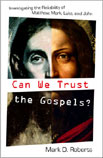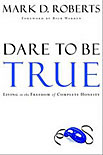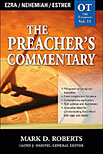« Introduction: Reading with an Agenda | Home | A Theology of Work in Ezra? »
An Introduction to Ezra
By Mark D. Roberts | Wednesday, September 2, 2009
Part 2 of series: A Theology of Work in Ezra
Permalink for this post / Permalink for this series
The Old Testament book of Ezra was originally the first part of one continuous work that included the book we call Nehemiah as the second part. The story of Ezra-Nehemiah was written as a continuous narrative.
We don’t know much about the writer of Ezra-Nehemiah, other than what we can glean from the books themselves. It’s evident that the writer, who was either the same person or someone closely related to the person who wrote 1 and 2 Chronicles, used a number of primary sources in telling the story of the rebuilding of Jerusalem and its Temple after the Babylonian exile. The date of writing must have been later than 430 B.C., when the action of Nehemiah concludes, and probably occurred before 300 B.C.
The theme of restoration pervades Ezra-Nehemiah. In my commentary I utilized the following basic outline for these books:
1. Restoration of the Temple (Ezra 1:1-6:22)
2. Restoration of Covenant Life, Phase One: The Work of Ezra (Ezra 7:1-10:44)
3. Restoration of the Wall through Nehemiah (Neh 1:1-6:19)
4. Restoration of Covenant Life, Phase Two: Ezra and Nehemiah Work Together (New 7:1-13:31)
Notice that Ezra himself does not appear in the book the bears his name until the last four of its ten chapters.
The two-volume work of Ezra-Nehemiah make sense in light of the covenant between God and Israel forged at Mt. Sinai. There, God entered into a covenant relationship with Israel, promising to bless the nation if the people would only be faithful to God by obeying his law. Unfaithfulness would lead to divine judgment. Unfortunately, the Israelites persistently rebelled against God, rejecting his law and pursuing other gods. Thus God’s judgment fell upon his people, with the final blow delivered in 587 B.C. by the Babylonians under the leadership of King Nebuchadnezzar. They killed the leaders of Judah, burned the temple in Jerusalem to the ground, and took the finest of Jerusalem’s citizens back to Babylon. Thus began the Exile.
The book of Ezra begins to tell the story of restoration after the Exile, as the Israelites are returned to Jerusalem in order to rebuild their Temple as well as their life as a covenant community. Here’s how the narrative begins:
1 In the first year of Cyrus king of Persia, in order to fulfill the word of the LORD spoken by Jeremiah, the LORD moved the heart of Cyrus king of Persia to make a proclamation throughout his realm and to put it in writing: 2 “This is what Cyrus king of Persia says: “‘The LORD, the God of heaven, has given me all the kingdoms of the earth and he has appointed me to build a temple for him at Jerusalem in Judah. 3 Anyone of his people among you — may his God be with him, and let him go up to Jerusalem in Judah and build the temple of the LORD, the God of Israel, the God who is in Jerusalem. 4 And the people of any place where survivors may now be living are to provide him with silver and gold, with goods and livestock, and with freewill offerings for the temple of God in Jerusalem.’” (Ezra 1:1-4, NIV)
After Cyrus overthrew Babylon in 539 B.C., he authorized the rebuilding of the Temple in Jerusalem. His action fulfilled the prophecy of Jeremiah concerning the length of the Exile. But the prophet Isaiah had been even clearer about the divinely appointed role of Cyrus himself:
1 “This is what the LORD says to his anointed, to Cyrus, whose right hand I take hold of to subdue nations before him and to strip kings of their armor, to open doors before him so that gates will not be shut. . . . 4 For the sake of Jacob my servant, of Israel my chosen, I summon you by name and bestow on you a title of honor, though you do not acknowledge me. . . . 13 I will raise up Cyrus in my righteousness: I will make all his ways straight. He will rebuild my city and set my exiles free, but not for a price or reward, says the LORD Almighty.” (Isa 45:1, 4, 13)
This is the story told in the first chapters of Ezra. To those chapters I’ll turn in my next post as I consider the theology of work in Ezra.
Topics: Theology of Work Project |
One Response to “An Introduction to Ezra”
Comments
Thanks for your willingness to make a comment. Note: I do not moderate comments before they are posted, though they are automatically screened for profanities, spam, etc., and sometimes the screening program holds comments for moderation even though they're not offensive. I encourage open dialogue and serious disagreement, and am always willing to learn from my mistakes. I will not delete comments unless they are extraordinarily rude or irrelevant to the topic at hand. You do need to login in order to make a comment, because this cuts down on spam. You are free to use a nickname if you wish. Finally, I will eventually read all comments, but I don't have the time to respond to them on a consistent basis because I've got a few other demands on my time, like my "day job," my family, sleep, etc.
You must be logged in to post a comment.















September 2nd, 2009 at 7:40 am
How did you know that I was about to start a sermon series on Ezra-Nehemiah? I’m looking forward to learning from you. I’m currently pondering this uber-question as my angle on this sermon series: “How do you re-form a people after the disaster of the exile and the joy of the return? And how are we to be re-formed this side of the resurrection?”